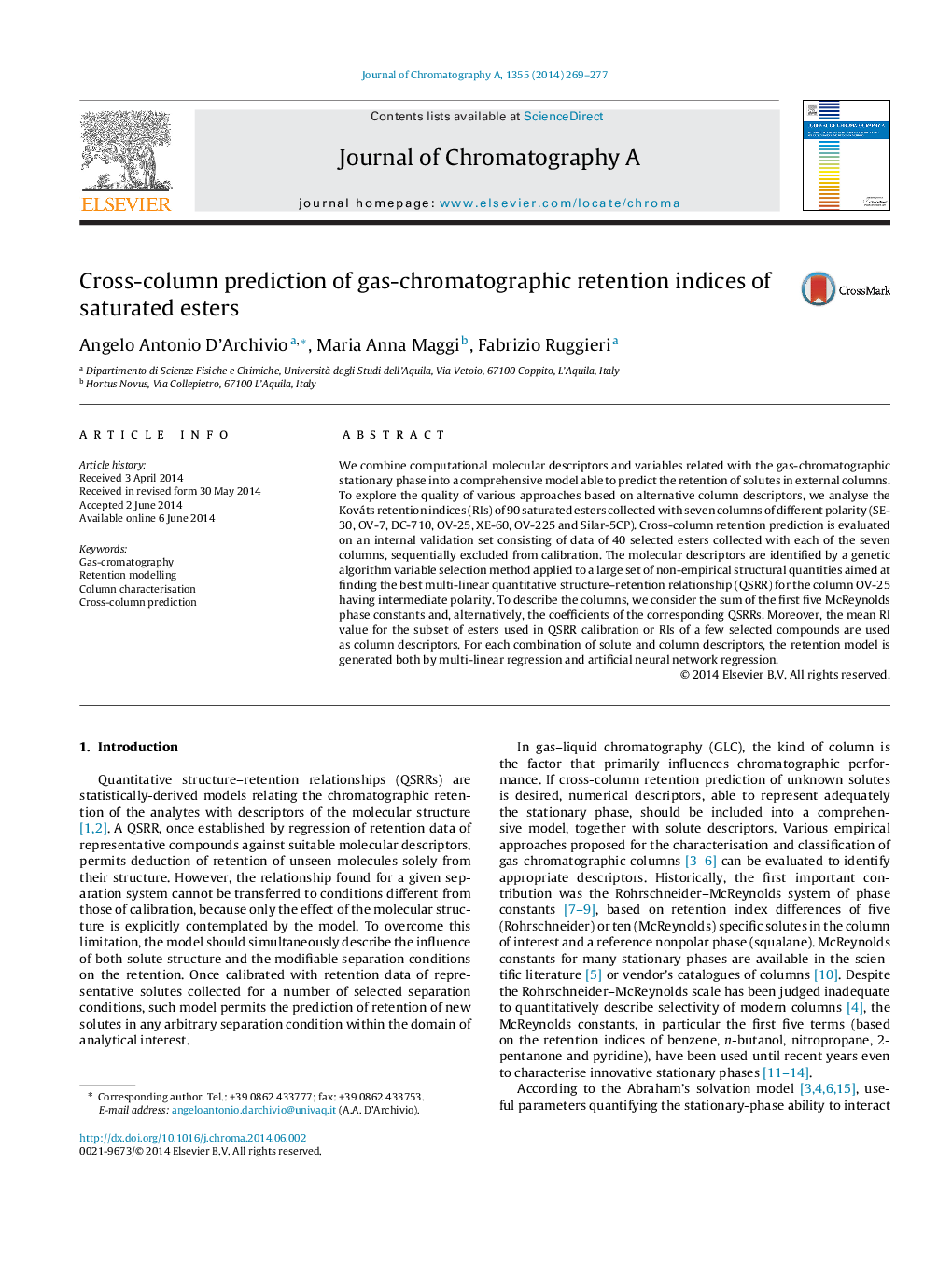| Article ID | Journal | Published Year | Pages | File Type |
|---|---|---|---|---|
| 1199803 | Journal of Chromatography A | 2014 | 9 Pages |
•We attempt cross-column prediction of gas-chromatographic retention indices of saturated esters.•Molecular descriptors and column descriptors are combined in comprehensive models.•Alternative column descriptors are compared.•Retention indices of saturated esters in external columns are accurately predicted.
We combine computational molecular descriptors and variables related with the gas-chromatographic stationary phase into a comprehensive model able to predict the retention of solutes in external columns. To explore the quality of various approaches based on alternative column descriptors, we analyse the Kováts retention indices (RIs) of 90 saturated esters collected with seven columns of different polarity (SE-30, OV-7, DC-710, OV-25, XE-60, OV-225 and Silar-5CP). Cross-column retention prediction is evaluated on an internal validation set consisting of data of 40 selected esters collected with each of the seven columns, sequentially excluded from calibration. The molecular descriptors are identified by a genetic algorithm variable selection method applied to a large set of non-empirical structural quantities aimed at finding the best multi-linear quantitative structure–retention relationship (QSRR) for the column OV-25 having intermediate polarity. To describe the columns, we consider the sum of the first five McReynolds phase constants and, alternatively, the coefficients of the corresponding QSRRs. Moreover, the mean RI value for the subset of esters used in QSRR calibration or RIs of a few selected compounds are used as column descriptors. For each combination of solute and column descriptors, the retention model is generated both by multi-linear regression and artificial neural network regression.
